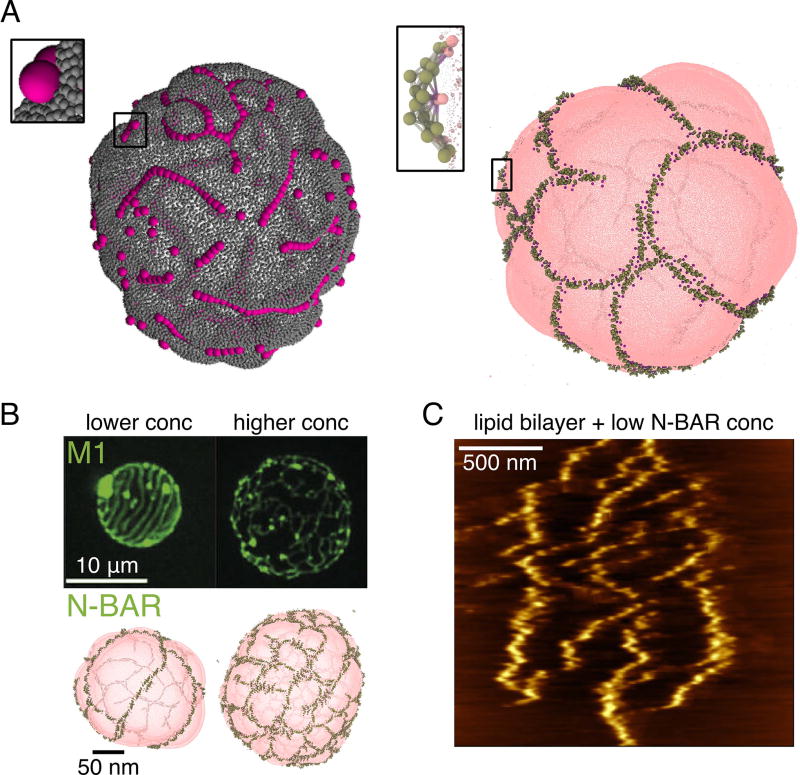Figure 1.
CG modeling to simulate membrane-curving phenomena. (A) Comparing the atomic picture of a lipid with CG lipid models of different resolution, MARTINI and the three-site HCG model. (B) Elastic-network CG modeling of the N-BAR domain. (C) Different mechanisms of creating membrane tubules from flat membranes and vesicles. From left to right: co-operative invagination of adhered nanoparticles (courtesy of A. Saric [20]), emanation of tubules toward embedded curved rods (reprinted from [34]), reticulation of a vesicle into a network of tubules induced by densely adhered N-BARs (based on [35]).

